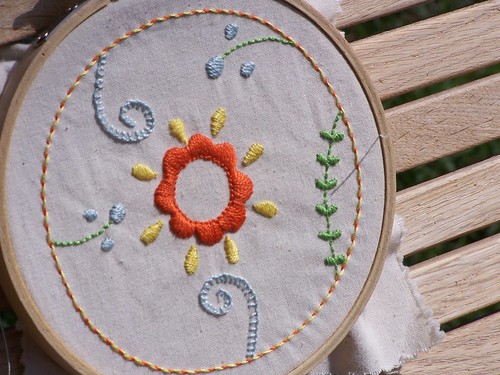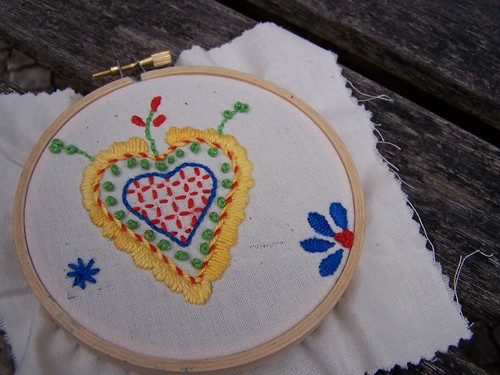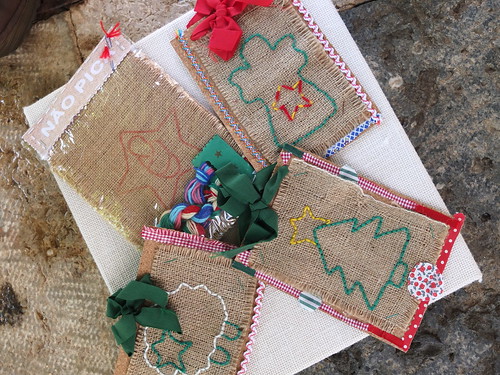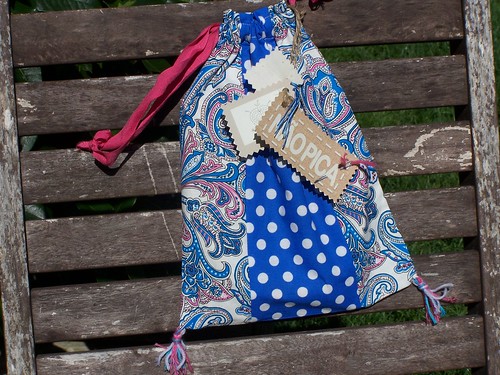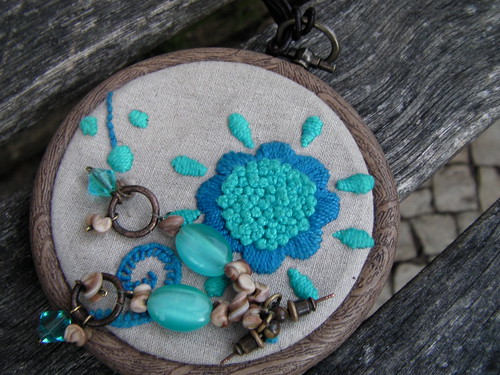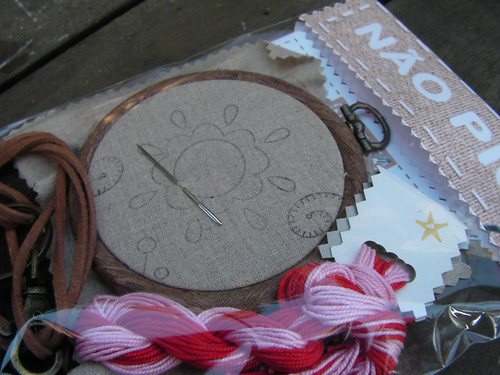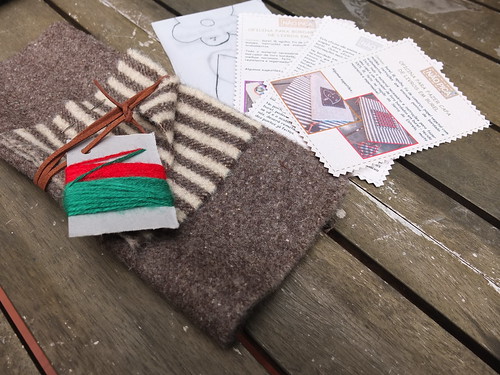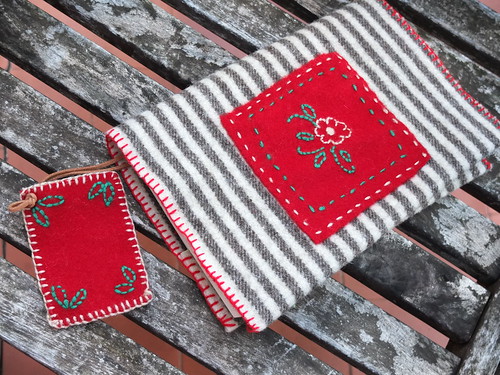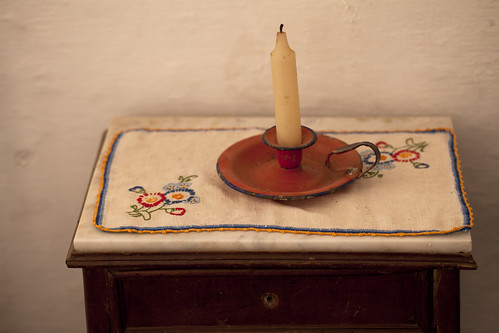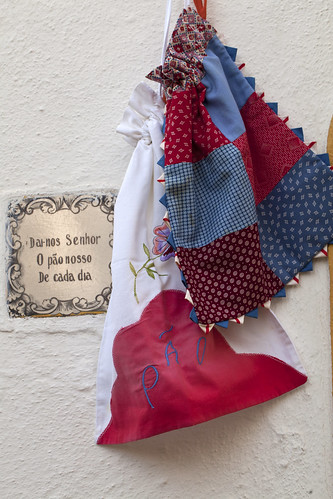Hello, everyone! Happy Tuesday! I can't believe it's November already, can you? I didn't have any decorations ready for the November/Thanksgiving season, so I stitched some leaves up for a wreath that I am going to share with you as today's tutorial.
Supplies needed to create this Thanksgiving Season wreath are:
- 12-inch styrofoam wreath/ring
- 8 sheets of felt in Fall colors
- One leaf template (available for you
here)
- One skien of yarn (you will have left overs)
- Embroidery floss
- Scissors
- Hot glue gun and glue sticks
- 20-inch piece of twine, string, or ribbon
Step 1: Begin the wreath by wrapping the yarn around the styrofoam ring. I placed the end against the ring, then looped the yarn over it. As you continue to loop the yarn around the ring, tighten it as you go and making sure to keep the yarn taut as you cover the styrofoam ring.
Step 2: Once you have finished covering the entire styrofoam ring, pull the yarn as tight as you can and place a dot of hot glue underneath that last string to seal off the yarn covering. Press the yarn down into the glue, making sure not to burn yourself. Once the glue cools, cut the yarn to separate the skein from your covered wreath. Set this aside, as this will be the base of your wreath.
Step 3: Cut 16 leaves out of felt using
this template. My leaves came out to 6-inches high and 4-inches at the widest point. If for some reason the template does not print out in this size range, adjust the size on your computer, and print. You are going to be doubling up the leaves when you stitch them, so make sure to cut two of each color.
Step 4: Take two leaves of the same color, and begin stitching them together with different accent stitches. I varied my stitches between running stitches and back stitches. I added veins to some of the leaves just to give each one a different look. You should have 8 leaves by the time you finish adding stitches.
Step 5: Using your hot glue gun, place a strip of glue on the back of a leaf, and add it to your yarn covered wreath. Keep adding each leaf until you get the look you want.
Step 6: Cut two 9-inch by 2-inch rectangles out of felt. There should be some large enough pieces of felt left over after you cut out your leaves that you can use for this. Cut triangles out of the ends, as though you were trimming ribbon. Add the phrase, "Give Thanks" to one rectangle with a backstitch. Place this piece on top of the other rectangle, and attach them using a running stitch.
Note: I didn't use a template for the writing. I just stitched it as I went... which is why it looks like a very very young child wrote it. I don't mind this handmade look, but if you want a more polished look, I recommend using an
embroidery alphabet pattern or stock computer font of your choice.
Step 7: Place your "Give Thanks" banner on the wreath and when you have found a place you like it, add some glue to the back and attach it to the wreath.
Step 8: Take the piece of twine or string, and very gently, string it behind the leaves. Tie the ends in a knot and hang.
Step 9: Enjoy!
Hope you have a great Tuesday!









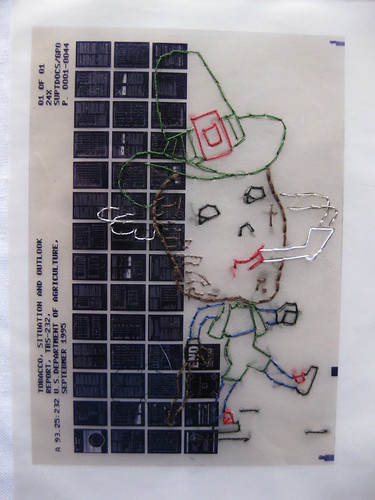
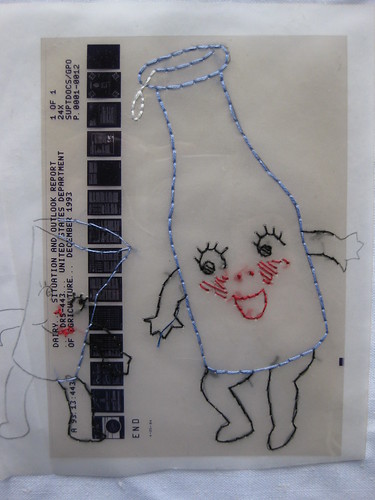

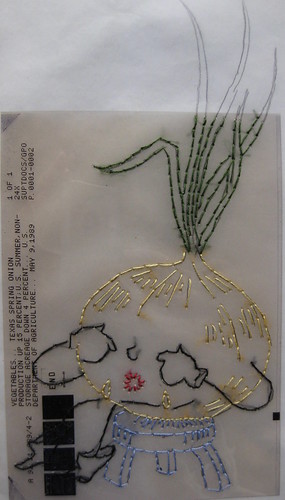




.jpg)




